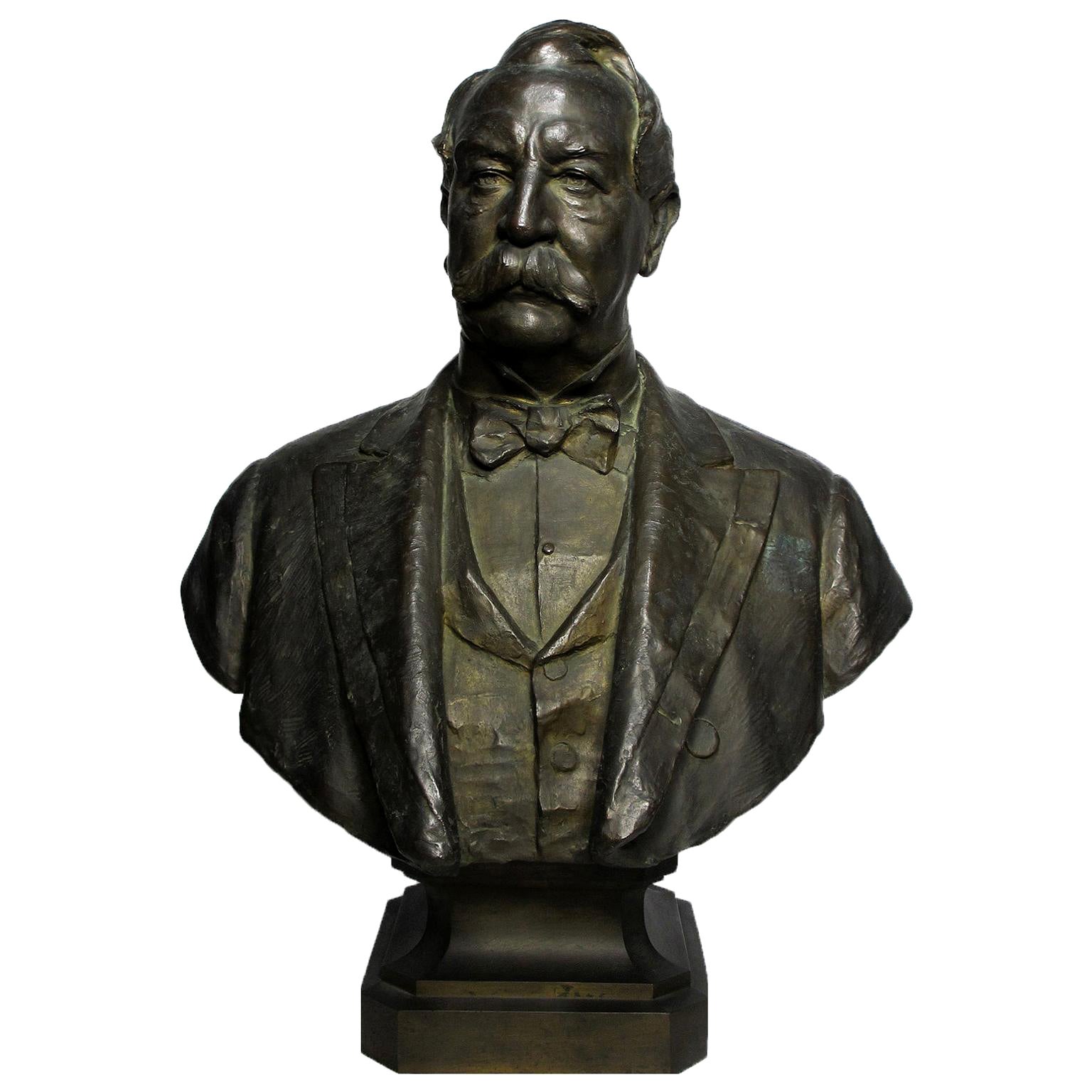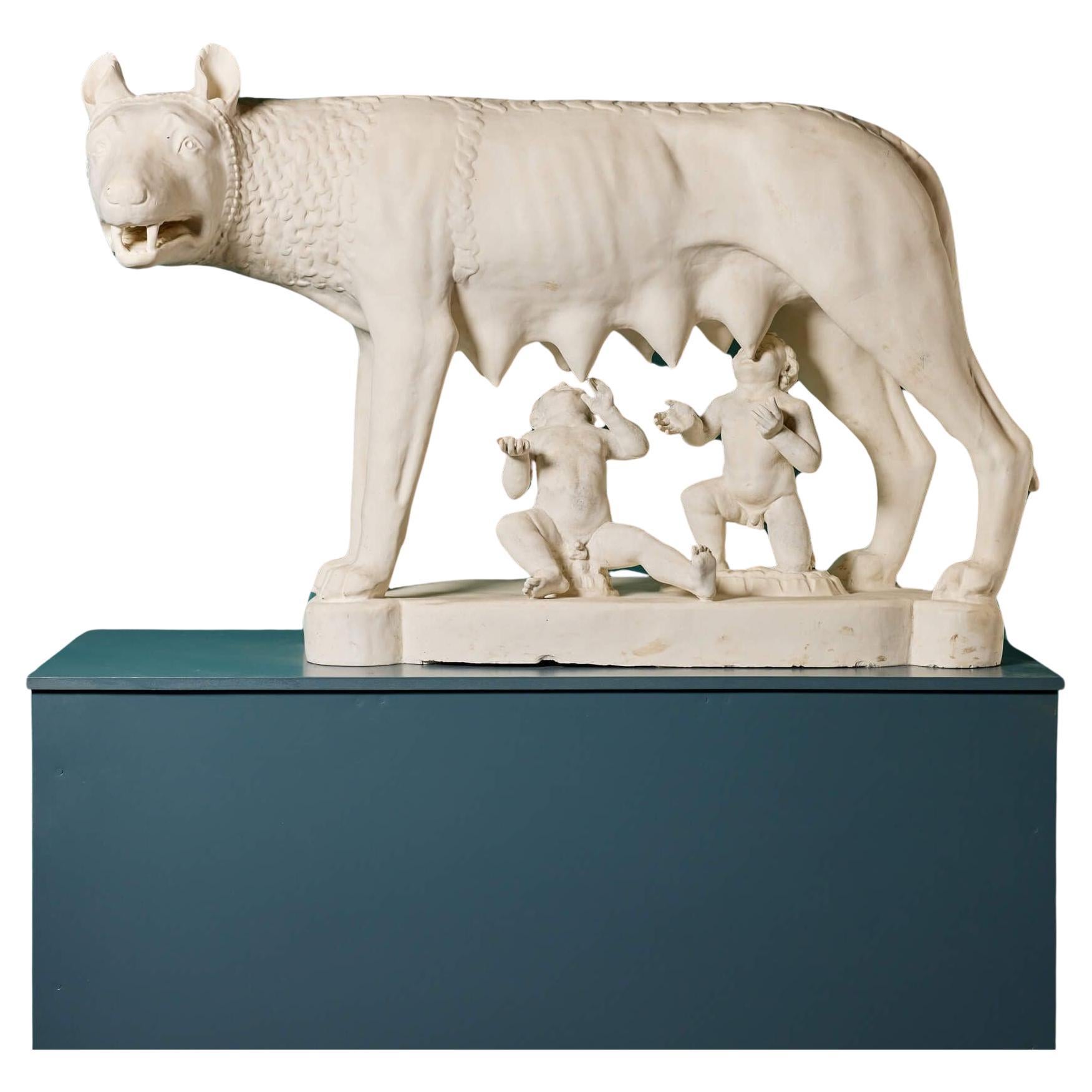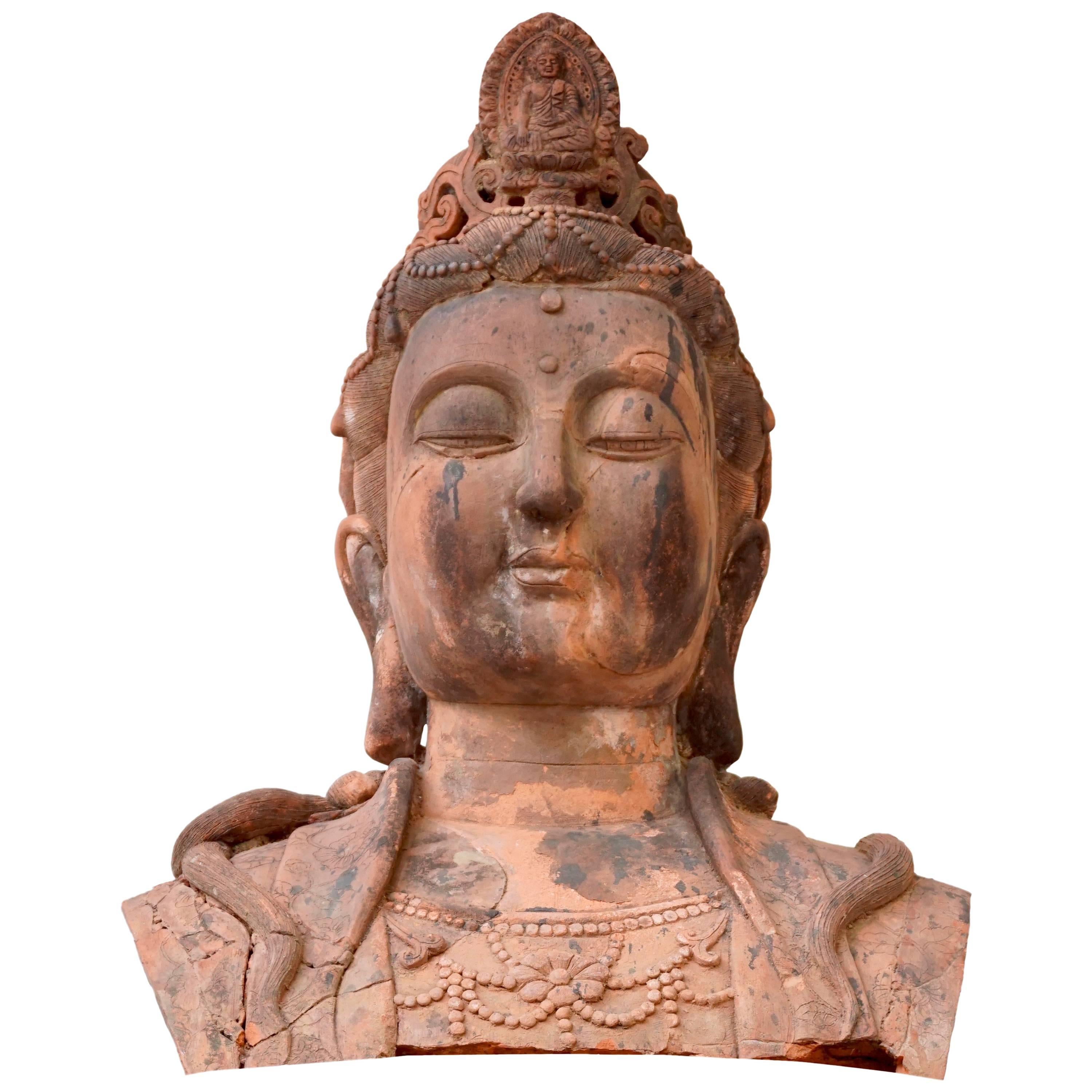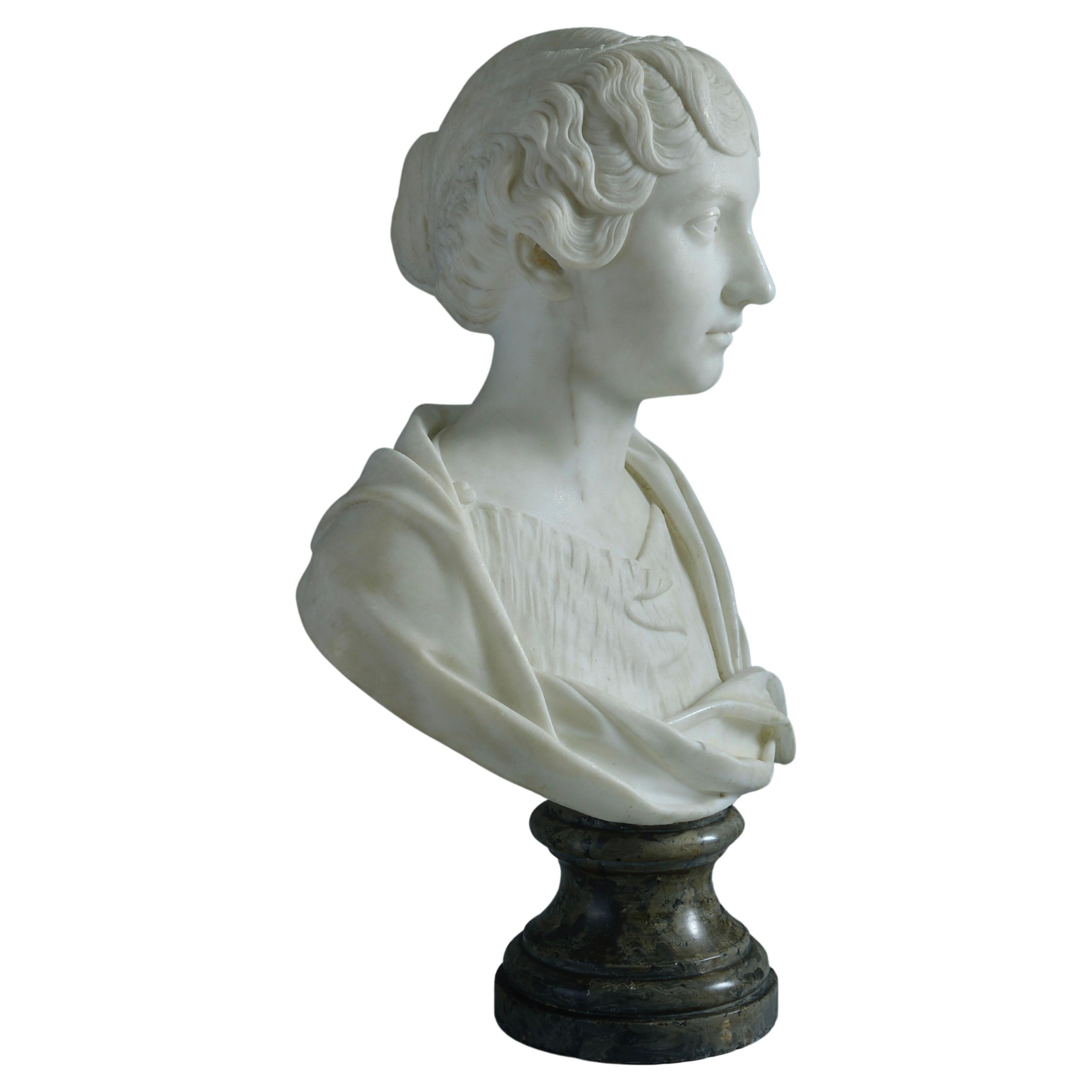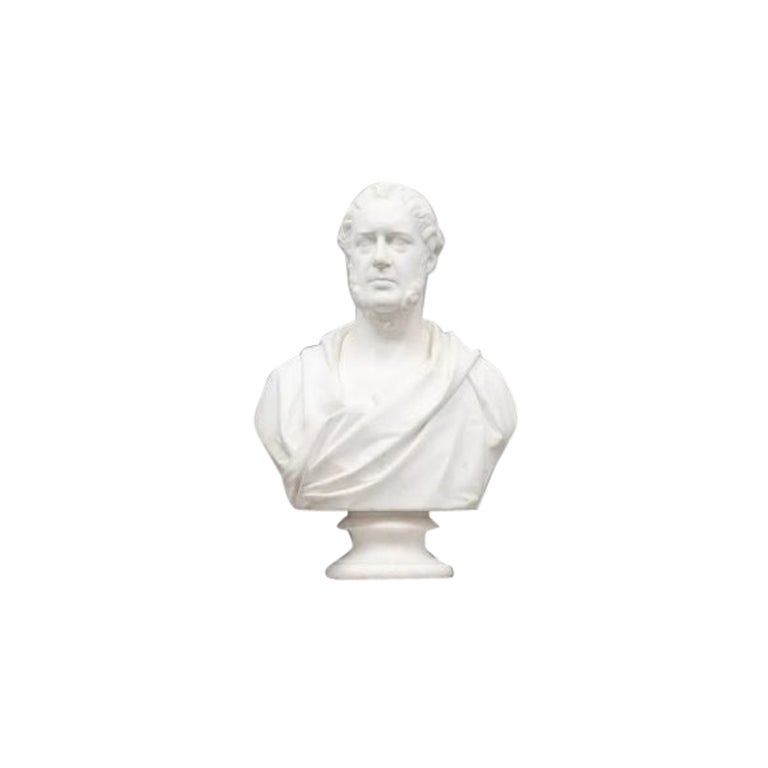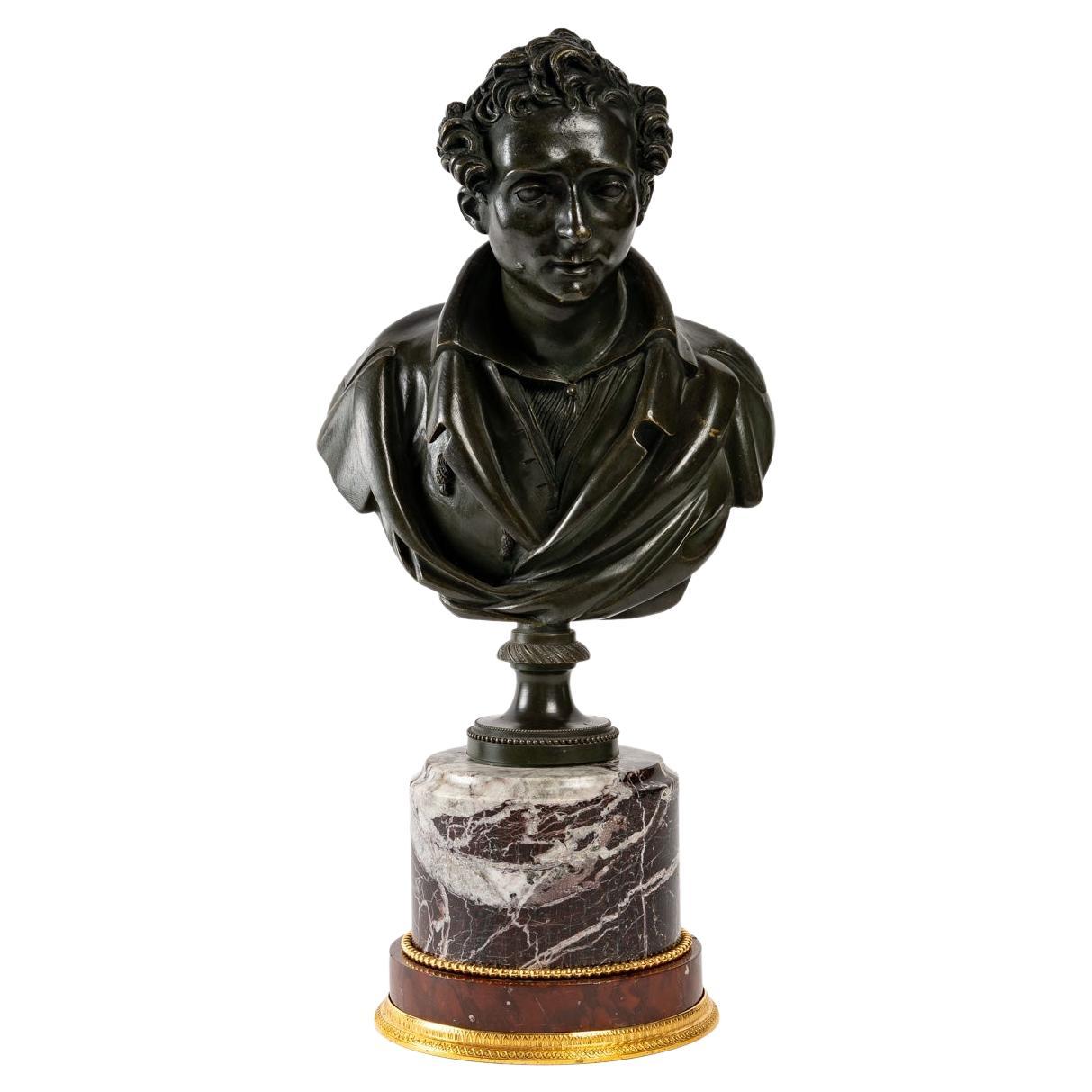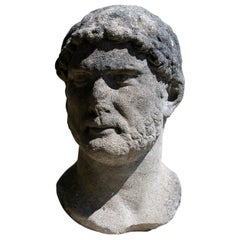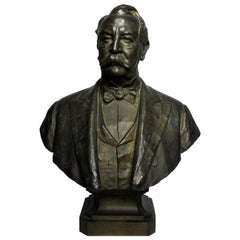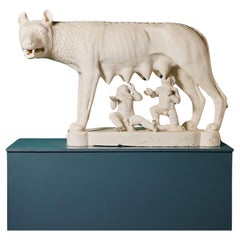
Superb and Rare Larger Than Life Marble Bust ‘the Capitoline Brutus'
View Similar Items
1 of 10
Superb and Rare Larger Than Life Marble Bust ‘the Capitoline Brutus'
About the Item
- Dimensions:Height: 28 in (71.12 cm)Width: 24.5 in (62.23 cm)Depth: 12 in (30.48 cm)
- Materials and Techniques:
- Place of Origin:
- Period:
- Date of Manufacture:1820
- Condition:Wear consistent with age and use. Minor losses.
- Seller Location:Suffolk, GB
- Reference Number:Seller: LVS9531stDibs: LU104908747953
You May Also Like
- Sculpture Bust Stone BrutusLocated in BUNGAY, SUFFOLKAfter the antique. This bust conveys the character of Brutus his courage, strength, power, nobility, honour and conviction. Measures: height 34cm., 13.5" diameter 20cm., 8" Fashioned after the c1539 statue of Brutus by Michelangelo, Bargello Museum in Florence. Marcus Junius Brutus Caepio (c.85-42): Roman politician, murderer of Gaius Julius Caesar and one of the last defenders of the republic. Marcus Junius Brutus is one of the great names of Roman history. Central to the notorious conspiracy that resulted in the assassination of the dictator Julius Caesar on the Ides of March 44 BC, Brutus gave brief hope to those who longed for the restoration of republican government. Yet by August of the same year he was on his way from Italy to the Greek east; a little over two years later he had committed suicide in the face of defeat at the hands of Mark Antony...Category
20th Century European Classical Roman Figurative Sculptures
MaterialsCast Stone
- Larger-Than-Life Patinated Bronze Bust of President William H. TaftBy Frederick Ernst Triebel 1Located in Los Angeles, CAA very fine and larger-than-life and very realistic museum quality patinated bronze bust of President William H. Taft (1857–1930) by Frederick Ernst Triebel (American, 1865-1944) cast by Nelli Foundry in Rome, Italy. William H. Taft, the 27th President of the United States and Jurist, is depicted with his renown thick mustache and wearing a bow tie, vest and coat. Inscribed on the back: F.E. Triebel. Sculp and Fond. Nelli, Roma, circa first quarter 20th century. Due to its size, subject and high quality, this bust was probably commissioned for a Museum or public exhibition, such as an embassy or government building, the same way as other similar works by the sculptor. The Roman foundry operated by the Nelli family during the last quarter of the 19th century cast works for many leading sculptors of the day, including Alfred Gilbert and Anton van Wouw...Category
Early 20th Century Italian American Classical Busts
MaterialsBronze
$19,850 Sale Price55% Off - Large Plaster Statue of the Capitoline WolfLocated in Wormelow, HerefordshireA large-scale plaster statue of the Capitoline Wolf circa 1900 after the antique in bronze thought to date from as early as the 11th century. Originally made by the Moulage Museum, B...Category
Early 20th Century Belgian Neoclassical Animal Sculptures
MaterialsPlaster
- Larger Than Life Terracotta Buddha Bust of Guanyin, Early 20th Century, ChinaLocated in Antwerp, BEA massive larger than life terracotta buddha bust of Guan Yin, China, early 20th century. Broken and restored with wear and tear from enduring exposure to the elements. Size: 75 cm high. Weight: 40 kg. Guanyin, Kwanyin, Guanshiyin or Guanyin Pusa is the Chinese interpretation of the bodhisattva Avalokiteśvara (the goddess of comfort and mercy). In addition, she is seen in Taoism as an immortal. The scripture dedicated to her is Dabeizhou. Guanyin is the goddess of compassion and the sea. She is one of the three saints of the western paradise, along with Mahasthamaprapta and Amitabha Buddha; they are worshiped to save departed loved ones from hell and grant them entrance to the western paradise. Guanyin Chinese name Traditional Chinese 觀音 Simplified Chinese 观音 Transcriptions Full Chinese name Traditional Chinese 觀世音 Simplified Chinese 观世音 Literal meaning "[The One Who] Perceives the Sounds of the World" Transcriptions Second alternative Chinese name Traditional Chinese 觀自在 Simplified Chinese 观自在 Literal meaning "Lord who Gazes down on the World" Transcriptions Burmese name Burmese ကွမ်ယင် IPA [kwàɴ jɪ̀ɴ] Tibetan name Tibetan སྤྱན་རས་གཟིགས Vietnamese name Vietnamese alphabet Quan Âm (Quán Âm) Quán Thế Âm (Quan Thế Âm) Quán Tự Tại Chữ Hán 觀音 觀世音 觀自在 Thai name Thai กวนอิม, พระอวโลกิเตศวรโพธิสัตว์ RTGS Kuan Im, Phra Avalokitesuan Korean name Hangul 관음, 관세음, 관자재 Hanja 觀音, 觀世音, 觀自在 Transcriptions Mongolian name Mongolian script ᠨᠢᠳᠦ ᠪᠡᠷ ᠦᠵᠡᠭᠴᠢ Japanese name Kanji 観音, 観世音, 観自在 Hiragana かんのん, かんぜおん, かんじざい Transcriptions Indonesian name Indonesian Kwan Im, Kwan She Im, Awalokiteswara Filipino name Tagalog Guanyin (ᜄᜓᜀᜈᜌᜒᜈ) Sanskrit name Sanskrit अवलोकितेश्वर (Avalokiteśvara) Khmer name Khmer អវលោកិតេស្វរៈ (Avalokitesvarak), អវលោកេស្វរៈ (Avalokesvarak), លោកេស្វរៈ (Lokesvarak) Hmong name Hmong Kabyeeb, Niam-Txiv Kabyeeb, Dabpog, Niam-Txiv Dabpog Guanyin (traditional Chinese: 觀音; simplified Chinese: 观音; pinyin: Guānyīn) is a Bodhisattva associated with compassion. She is the East Asian representation of Avalokiteśvara (Sanskrit: अवलोकितेश्वर) and has been adopted by other Eastern religions, including Chinese folk religion.[note 1] She was first given the appellation "Goddess of Mercy" or "Mercy Goddess" by Jesuit missionaries in China.[1] Guanyin is short for Guanshiyin, which means "[The One Who] Perceives the Sounds of the World."[2] On the 19th day of the sixth lunar month, Guanyin's attainment of Buddhahood is celebrated.[3] Some Buddhists believe that when one of their adherents departs from this world, they are placed by Guanyin in the heart of a lotus, and then sent to the western pure land of Sukhāvatī.[4] Guanyin is often referred to as the "most widely beloved Buddhist Divinity"[5] with miraculous powers to assist all those who pray to her, as is mentioned in the Pumen chapter of Lotus Sutra and Kāraṇḍavyūha Sūtra. Several large temples in East Asia are dedicated to Guanyin, including Shaolin Monastery, Longxing Temple, Puning Temple, Nanhai Guanyin Temple, Dharma Drum Mountain, Kwan Im Thong Hood Cho Temple, Shitennō-ji, Sensō-ji, Kiyomizu-dera, Sanjūsangen-dō, and many others. Guanyin's abode and bodhimaṇḍa in India is recorded as being on Mount Potalaka. With the localization of the belief in Guanyin, each area adopted their own Potalaka. In Chinese Buddhism, Mount Putuo is considered the bodhimaṇḍa of Guanyin. Naksansa is considered to be the Potalaka of Guanyin in Korea. Japan's Potalaka is located at Fudarakusan-ji. Tibet's Potalaka is the Potala Palace. Vietnam's Potalaka is the Hương Temple. There are several pilgrimage centers for Guanyin in East Asia. Putuoshan is the main pilgrimage site in China. There is a 33 temple Guanyin pilgrimage in Korea which includes Naksansa. In Japan, there are several pilgrimages associated with Guanyin. The oldest one of them is the Saigoku Kannon Pilgrimage, a pilgrimage through 33 temples with Guanyin shrines. Guanyin is beloved by most Buddhist traditions in a nondenominational way and found in most Tibetan temples under the name Chenrézik (Wylie: Spyan ras gzigs). Guanyin is also beloved and worshipped in the temples in Nepal. The Hiranya Varna Mahavihar located in Patan is one example. Guanyin is also found in some influential Theravada temples such as Gangaramaya Temple, Kelaniya and Natha Devale nearby Temple of the Tooth...Category
Early 20th Century Chinese Chinese Export Sculptures and Carvings
MaterialsTerracotta
$3,906 Sale Price20% Off - Larger Than Life Extravagant Folk Art SculptureLocated in Palm Beach, FLOutrageous larger than life piece of Folk Art painstakingly composed of found objects such as sea shells, beads, toys, vintage jewelry buttons, and bottle caps (to name a few). There...Category
20th Century American Folk Art Figurative Sculptures
MaterialsShell
$9,900 Sale Price58% Off - Busts Columns Pair of Composite Stone Brutus LaocoonLocated in BUNGAY, SUFFOLKA pair of weathered, composite busts, after the antique, Brutus & Laocoön, raised on integral socle bases, on tall cylindrical columns, 6ft.,3” high The suffering is beautifully con...Category
Early 20th Century Italian Renaissance Revival Figurative Sculptures
MaterialsComposition
$25,332 / set
Recently Viewed
View AllMore Ways To Browse
Large Torso Bust
Caesar Brutus
Lucius Bust
Grand Tour Marble Torso
Napoleon Caesar
Grand Tour Torso
Lucius Bronze Bust
Marble Busts Of Antiquity
Ancient Roman Marble Torso
Marble French Nobleman
Bust Brutus
Bernini Bust
Small Gaddi Torso Sculpture
Alabaster Bust Of Diana The Huntress
Goldscheider Balinese Bust
Bust Of Diana The Huntress
Kwan Yin Head
Bust Diana The Huntress

